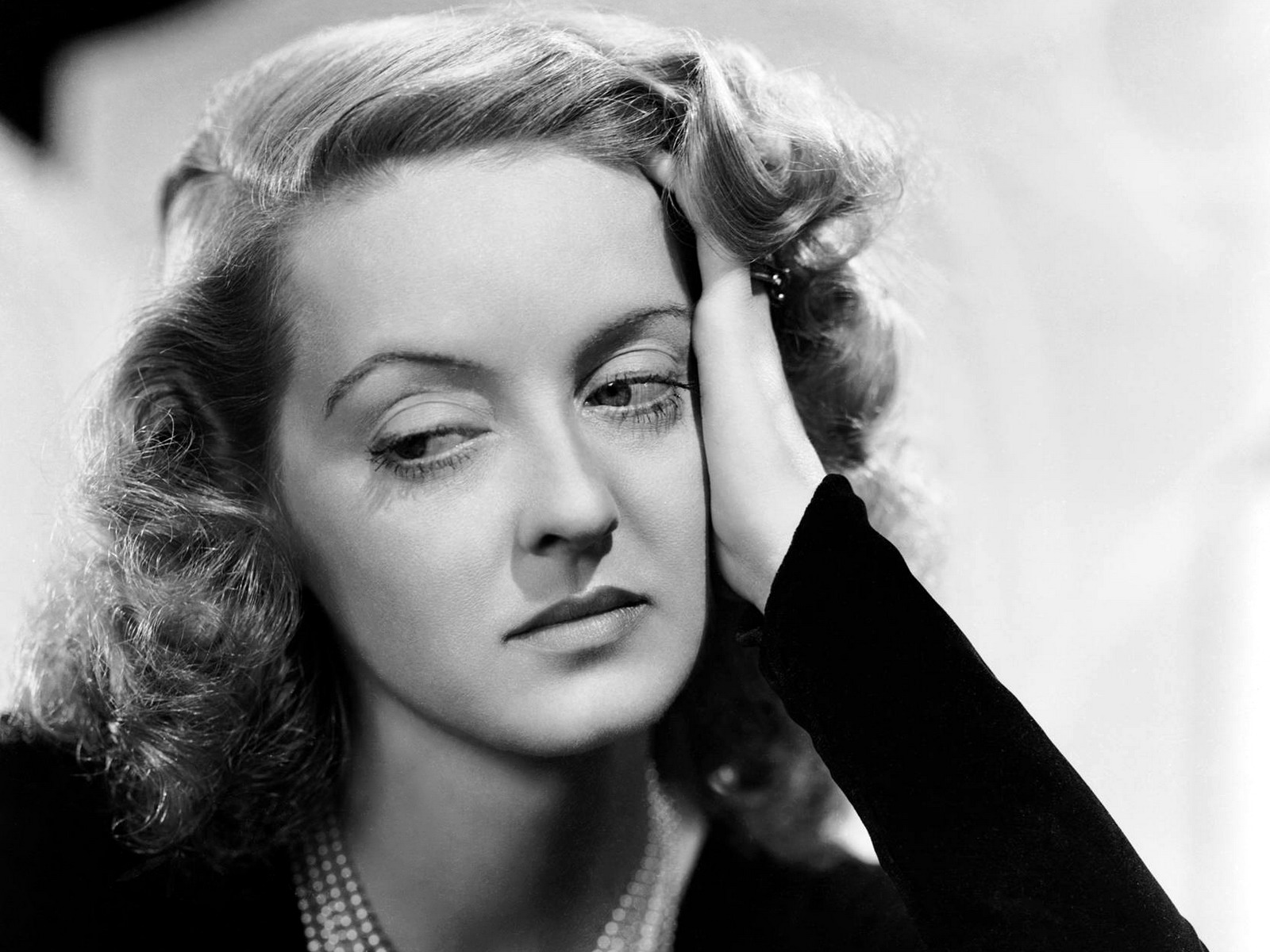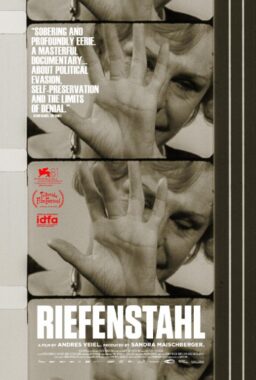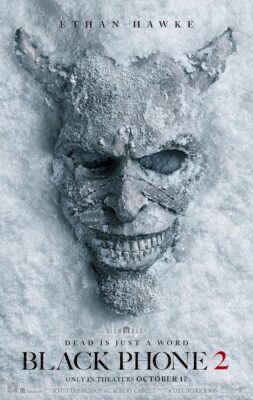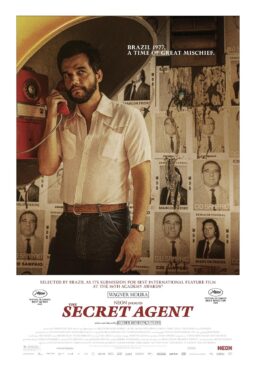There’s an infuriating, likely apocryphal, story that, after
her first screen test, Bette Davis was described as having less sex appeal than
the dopey, gangly, and dramatically unsexy comedic actor Slim Summerville. This
may never have actually happened, but it feels true considering the longstanding
belief that Bette doesn’t just contradict our expectations of how a major
Hollywood star was supposed to look at that time but that she’s outright ugly.
She isn’t. But that’s not the point. At the beginning of her career no one at
Warner Brothers had any idea what to do with her. Then she had a shock of
platinum blonde hair, a slim waist, the sort of beauty that electrifies more
than allures, and huge doll eyes flickering with a strange luminosity often
communicating more than the paltry scripts given to her. Even this early on, there is a spark of something powerful and the beginnings of what would be the
foremost thematic preoccupation in her career: anger. It is because of this, in
spite of what the studio system’s machinery sought to shape her into, that she
became not only a star but one of the most elemental, powerful actresses ever
to grace the screen.
In the early 1930s through the 1940s Bette was at the
forefront of a curious subgenre known as the women’s picture. The women’s
picture could take the shape of a bitter, hothouse noir (“Leave Her to Heaven,” 1945), a musical (“Cover Girl,” 1941), a sharp drama (“Born to Be Bad,” 1950),
or an epic melodrama (“Gone with the Wind,” 1939). Despite its shapeshifter status,
what links the genre is its concern with placing women—along with their
emotional, intellectual, psychological and social experiences—at the center
of their own cinematic world. Bette’s image was the perfect balance of china
and steel, vulnerability and strength that articulated the shifting cultural
dynamics her audience was experiencing during World War II. Underneath this
image of the go-getter modern woman, Bette
subverts a myth that is perhaps the most recognizable image of female anger in
the Western world.

Medusa’s myth is primarily understand in broad strokes: hair
of writhing snakes; glare that turns men to stone; her head severed and voice
lost to became a weapon for Perseus, later an emblem on Athena’s shield. Ovid
added new texture to her past as a young maiden raped by Poseidon in Athena’s
temple and turned monstrous by the goddess. The fear of expressing anger and
its repercussions is a wounded inheritance for every woman. This is reaffirmed
by how Medusa’s myth ends only in tragedy and loss. As girls, we’re told to snuff
out this anger and ignore how useful a tool it can be to shape our lives or
we’ll be doomed to a lonely existence. It’s a lesson I tried very hard to
ignore as a young Afro-Latina, even though anger has an even heavier weight
because of certain racial stereotypes all black women are forced to deal with.
Then here comes Bette Davis in my life. I don’t remember exactly when I first
saw her. In “All About Eve” (1950), during my mid-teens, perhaps when I was grappling with returning from a second
trip to the mental hospital. Or maybe it was a little later when I was heading
off to college watching her tear her way across the screen in “Whatever Happened to Baby Jane?” (1962).
I don’t remember the first film of hers I watched, but I remember how I felt. A
surge of recognition. A spark of inspiration. A clarion call through the
darkness inviting me to use anger instead of ignoring it or being destroyed by
it. Despite the Production Code leading to her most prickly, transgressive
characters meeting tragic ends, Bette subverts the myth of Medusa by finding
humanity in the monster and giving her back her voice. The earliest, most
dynamic signs of Bette’s preoccupation with anger is in “Of Human Bondage” (1934) and “Marked
Woman” (1937).

In “Of Human Bondage,” Bette
plays vulgar waitress Mildred Rogers who both terrorizes and arouses Leslie
Howard’s sensitive artist. As Mildred, Bette is a spiteful mess wreaking havoc
throughout the lives of everyone in her path. In “Marked Woman,” which has her playing off Humphrey Bogart, Bette’s
anger is righteous as she stands up to the mob even after a beatdown leaves her
scarred. Bette is utterly hypnotic in both roles, dominating each scene she’s in
with a blistering presence even when she doesn’t speak. And yet her craftsmanship
feels unrefined. She hasn’t fully tapped into what she can do with anger quite
yet. A few years later, during her second collaboration with director William
Wyler, she does.
When directing his second film, “In This Our Life” (1942), John Huston saw something “elemental” in
Bette. It was as if “she had a demon within her which threatens to break out
and eat everybody. The studio confused it with overacting. Over their
objections, I let the demon go.” Bette made an art out of finding the humanity
in complex, unlikable, even outright evil women. In William Wyler’s “The Letter” (1941), she stars as Leslie
Crosbie, the wife of a British plantation manager who kills her lover in cold
blood at the start of the film and creates a disturbing fiction to cover up
what is essentially murder. Leslie is a tricky role to pull off. She’s
undoubtedly a femme fatale with cold-hearted ambition and little sense of
morality. In lesser hands, she could easily be a shrill, anti-feminist creation.
But one of Bette’s greatest strengths is in seeing the woman behind the
monster. She’s most known for an anger dripping with braggadocio—loud,
vulgar, crackling like fresh fire. This is seen in her set of identifiable
acting flourishes—hand-wringing, using her cigarette to punctuate sentences
or communicate mood, sharp strides across the screen as if marching into
battle—that are easy to get hung up on and even confuse for overacting. In
this way, Bette can be construed as a camp punchline, the flattened image of a
monstress much like what our culture has done to Medusa. But in doing so you
lose the ability to see the way she can subvert our expectations communicating
the texture of anger through arguably the best tool in a cinematic actors
arsenal: stillness.
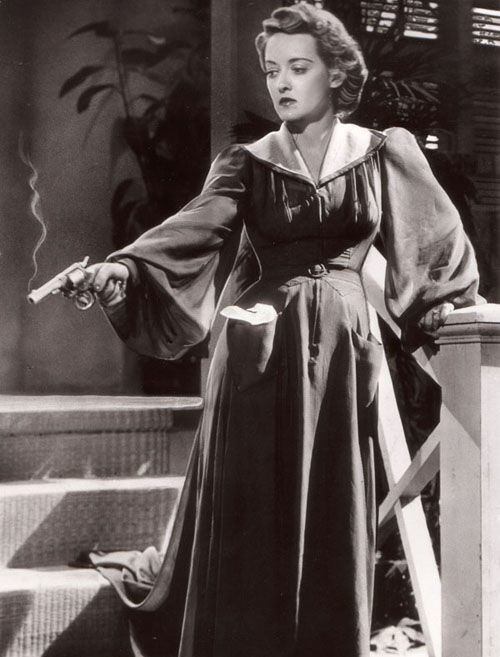
“The Letter” opens
outside, in the dead of night amongst the sounds of nature. The near-silence is
broken by a man we later learn is her lover staggering from Leslie’s home and
the shots she fires again and again until she empties her revolver into his
back. Her eyes as bright and hypnotic as the full moon that looms above her.
Without her most well-known actorly flourishes, Bette relies purely on a cool,
assured physicality. This opening proves Bette was even more powerful in the
quiet moments when her anger needed to seethe rather than explode.
Even in her more romantic, tender-hearted dramas, where Bette
can sometime be found playing outright martyrs, that anger is still there. While
the scripts that lay the foundation of much of her filmography require short
bursts of anger from the various characters she played, Bette instead braids a
rich tapestry with the emotion carefully evoking its ebbs and flows. We can see
it in the sharp way she jabs her cigarette as if violently punctuating each
sentence. We can hear it in the way she draws out her words. We can experience
it through her gaze, which often feels as sharp as the edge of a blade, or like
that jolt of pain when accidentally touching an open flame.
“Now, Voyager” (1942) crystallizes her intelligence as an actress as she recognizes that anger
comes in many textures and flavors. The film follows Bette as Charlotte, the
sheltered daughter to the wealthy and controlling Ms. Vale, struggles
with mental illness and isolation but is slowly able to wrestle from her
mother’s grip with the help of a psychiatrist (Claude Rains) and sheer
will. As Charlotte, Bette demonstrates
the full breadth of anger in inventive ways, even when it seems no longer useful
for its protagonist. But Bette understands the way anger propels. Anger can be
underscored by the cold ache of loneliness. It can be as hot as the noonday
Miami sun. It can simmer beneath the surface of ours lives causing us to
quietly rebel until it openly erupts. Throughout her career Bette displays a
keen understanding for the emotion in all its complexities—how anger can be
tender and righteous, the aftermath of a scar or the creator of one. Perhaps,
it’s her understanding of anger and refusal to shy away from its power that
caused her to strike fear in the hearts of (male) critics and filmmakers,
alike.

When Joseph L. Mankiewicz decided to cast Bette as the lead
in “All About Eve” another director
warned him about what he was in for. Edmund Goulding directed Bette in four
films, including “Dark Victory” (1939), and said to Mankiewicz, “Dear boy, have you gone mad? This woman will destroy
you, she will grind you down to a fine powder and blow you away. You are a
writer, dear boy. She will come to the stage with a thick pad of long yellow
paper. And pencils. She will write. And then she, not you, will direct. Mark my
words.” I’ve never been frightened of Bette like many of the critics and
filmmakers who speak of her much like Goulding does. Entranced, inspired, and
challenged, yes. But never afraid. Perhaps because watching Bette has always
felt like watching my own emotional landscape writ large. Something I believe
many women feel.
One of the most layered depictions of Bette’s anger is her
least known, in the TV film “Strangers: The
Story of a Mother and Daughter” (1979) co-starring another powerhouse, Gena
Rowlands, as her estranged daughter. After a twenty-year absence, when the two
women come face to face, Bette’s posture is rigid, her face set by a hardened
glare. But there’s also the flicker of something else in her eyes, in the way
she sets her jaw that speaks to the shared history between these characters and
the chasm that has grown between them. This flicker shows how Bette understands
that such unbridled anger often is the mark of our most personal wounds.
Bette’s legacy is ultimately predicated upon her unique
ability to understand and fully inhabit truly unlikable characters. She
excelled at playing wounded and wounding women without an air of apology or
condescension toward the characters (or audience). She played complicated
characters whose monstrosity sometimes turned physical in the form of thick,
mask-like makeup or physical scars. It isn’t that there haven’t been other
actresses to take up this mantle. But none have done so with the consistency,
honesty, and sheer delight that Bette brings to the screen. But more than
anything, Bette turned anger into an art form and showed the humanity in the
kind of women our culture often ignores. Through Bette’s
artistry, her most transgressive characters aren’t cautionary tales but bold
emblems for a way of life too few women are allowed to live. Perhaps
Bette’s legacy is even more personal in the way she feels like a voice, an
image reaching across the darkness to tell us there’s another way to survive.

